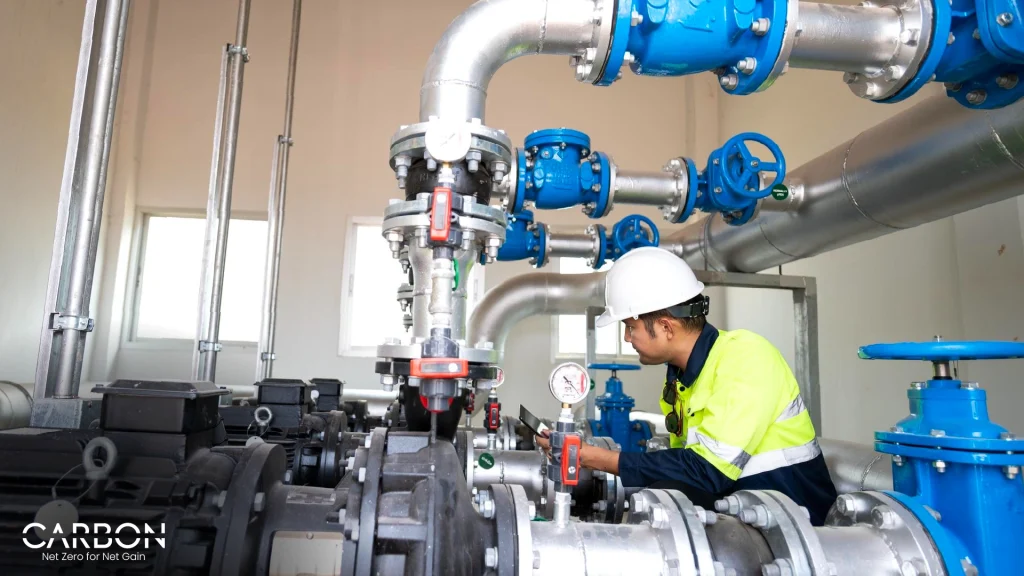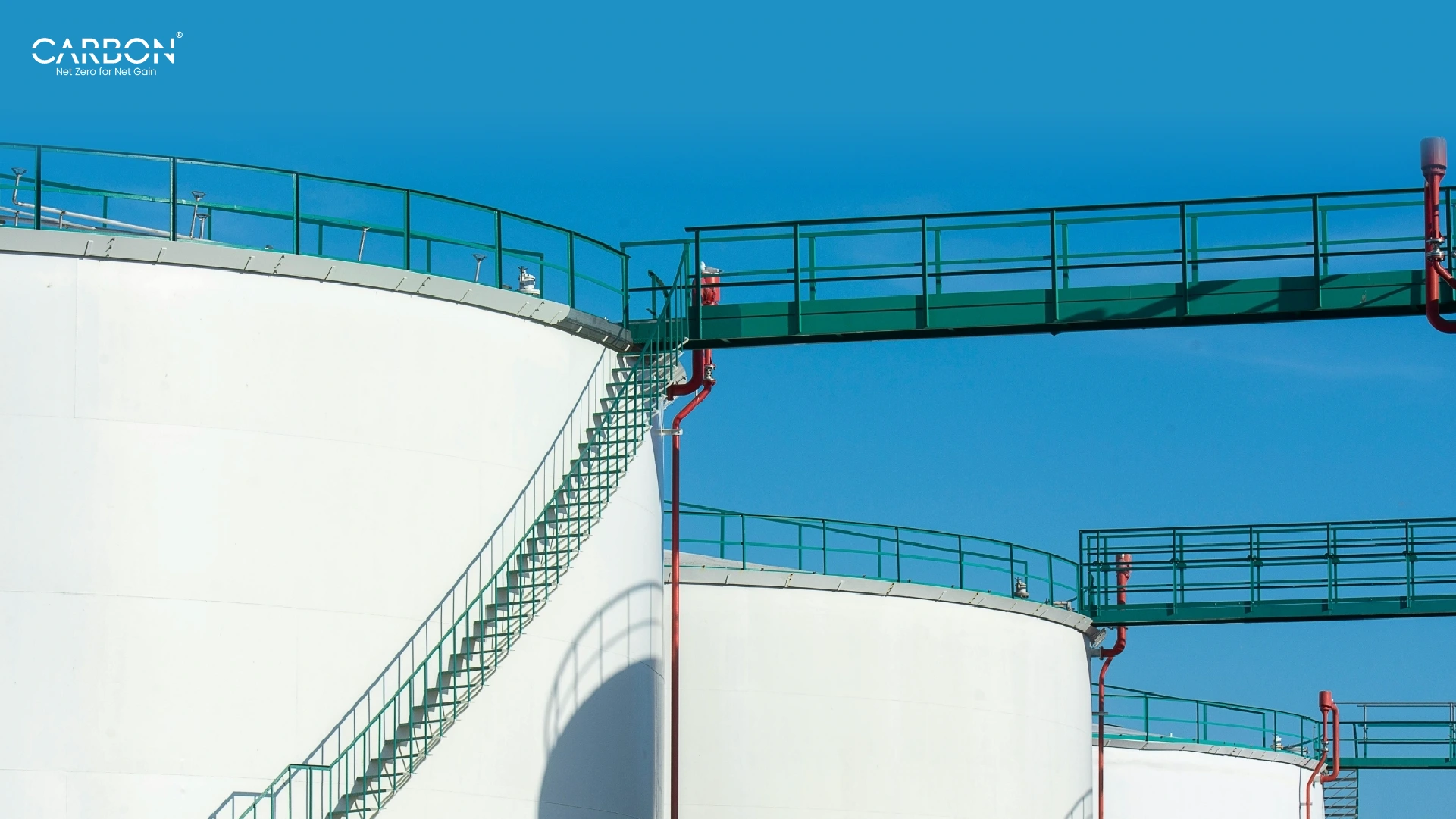Key Takeaways
• Energy waste costs manufacturers $510 for every $1,000 spent on electricity – identifying direct vs. indirect costs reveals hidden profit drains
• LED lighting and VFDs deliver 40-90% energy savings with payback periods under 12 months for immediate ROI
• Compressed air leaks waste 20-30% of compressor output – simple detection programs can save tens of thousands annually
• Thermal imaging and preventive maintenance reduce energy consumption by 41-60% while extending equipment lifespan significantly
• Building an energy team with measurable goals and dashboards creates sustainable programs that compound savings over time
$3.2 billion.
That’s how much money factories are leaving on the table every year through energy efficient manufacturing waste. Not someday. Right now.
Here’s what that looks like in your facility: air compressors humming away with dozens of leaks, lighting systems burning through electricity like it’s free, and motors running at full throttle when they should be coasting. The Compressed Air and Gas Institute puts it bluntly: improperly maintained air compressors alone drain billions in wasted energy costs annually [21].
It’s like watching dollar bills fly out of leaky pipes while your production lines keep humming.
The numbers don’t lie.
More than one-third of all energy consumed in the United States—over $200 billion yearly—powers manufacturing plants and factories [21]. But here’s the kicker: companies implementing energy efficiency best practices are twice as efficient as the industrial average [21].
Twice.
That gap isn’t just about doing the right thing for the environment. It’s about survival. Small to medium-sized manufacturers feel this squeeze hardest—they pay higher energy prices and operate with tighter cash flow [21]. When one manufacturer discovered 24 air leaks using detection technology, they saved $90,000 annually [21].
These aren’t small numbers. They’re game-changers.
What’s really happening on your factory floor?
Energy waste isn’t just an operational hiccup. It’s a systematic drain on profitability that most manufacturers accept as “the cost of doing business.” But adopting proven efficiency practices could reduce energy intensity by an additional 20% by 2030 [21].
The question isn’t whether you can afford to fix energy waste.
It’s whether you can afford not to.
We’ll walk you through the hidden costs bleeding your bottom line and show you exactly how to plug those leaks. From compressed air systems to lighting, motors, and beyond—this is your roadmap to turning energy waste into competitive advantage.
Understanding the Hidden Costs of Energy Waste
“There is no waste in the world that equals the waste from needless, ill-directed, and ineffective motions.” — Frank Bunker Gilbreth, Sr., Pioneering industrial engineer, early advocate of efficiency in manufacturing
51% of energy used in manufacturing is wasted [22].
Read that again. For every $1,000 you spend on electricity, $510 is vanishing into thin air. That’s like tossing half your coffee in the trash before taking a sip.
But here’s what most manufacturers don’t realize: energy waste isn’t just about the meter spinning faster. It’s about operational blind spots that compound into serious financial exposure.
1. Direct vs. indirect energy costs
Manufacturing costs look straightforward until you dig deeper.
Direct energy costs are easy to spot—the electricity running a specific production line [23]. These are the visible part of your energy iceberg. You can track them, measure them, and tie them directly to what you’re making.
But lurking beneath the surface are indirect energy costs, those overhead expenses that keep your facility running but can’t be tied to individual units [23]:
- Facility lighting and HVAC systems
- Equipment running on standby
- Compressed air systems (often running when not needed)
- Inefficient motor operations
Most companies write these off as “unavoidable overhead,” which kills their ability to spot actual savings opportunities [3]. The truth? Understanding your real energy costs is the first step toward reclaiming your bottom line.
2. How energy waste affects production efficiency
Energy inefficiency reaches far beyond monthly utility bills.
Outdated or poorly maintained equipment demands more energy to run, creating a double penalty—you’re paying more for energy and getting less productive output [22]. It’s like driving with the brakes on.
When systems break down more frequently, you’re hit with higher maintenance costs and increased downtime [22]. Both slam your production efficiency directly.
3. The link between energy waste and equipment lifespan
Here’s what most manufacturers miss: energy waste and equipment lifespan are connected.
Inefficient energy use typically means equipment is working harder than necessary, which shortens its operational life [24]. Studies show that equipment lifespan is a critical factor in determining the environmental advantage of products [24].
Predictive maintenance not only optimizes performance but extends equipment lifespan by minimizing premature failures [1]. Think of it as preventive medicine for your machinery.
Want to see how much you could save? Check out our ROI calculator to discover how maximizing savings through energy efficiency could transform your manufacturing operation.
Key Areas Where Energy Waste Occurs in Manufacturing
Manufacturing facilities are like leaky buckets—energy escapes in predictable places if you know where to look.
But here’s the thing: most plant managers walk past these energy drains every single day without seeing them. The hum of inefficient equipment becomes background noise. The flickering fluorescent lights get ignored until they burn out completely.
Meanwhile, your competitors are plugging these leaks and banking the savings.
Where exactly is your money going?
1. Inefficient lighting systems
Those fluorescent tubes hanging from your ceiling? They’re energy vampires.
Outdated lighting systems like incandescent and fluorescent bulbs consume massive amounts of electricity while delivering inconsistent illumination [7]. Worse, they create safety risks and productivity losses when workers can’t see clearly. The maintenance costs? They skyrocket in high-ceiling environments where every bulb change requires equipment and downtime [7].
LED lighting uses 90% less energy while providing the same brightness and lasting 15 times longer [8]. That’s energy savings and operational freedom.
2. Compressed air leaks and pressure drops
Listen carefully next time you walk through your facility.
Hear that hissing sound? That’s money escaping. Your compressed air system might be the sneakiest energy thief in your plant, with leaks wasting 20-30% of compressor output [9].
But here’s what most managers don’t realize: a proactive leak detection program can reduce leakage to less than 10% [10]. Every 2 PSIG pressure drop costs you one percent energy efficiency [11]. The fix? Regular inspections and preventative maintenance [12].
Find the leaks. Fix the leaks. Bank the savings.
3. Poorly maintained motors and drives
Motors are the workhorses of manufacturing, consuming approximately 70% of all electricity in the sector [13].
When bearings wear out, alignment shifts, or lubrication fails, motors work harder while delivering less [14]. It’s like driving with the parking brake on—you’re burning fuel to fight against yourself.
Variable frequency drives (VFDs) offer a straightforward solution, yielding 15-40% energy reductions on average [13]. Ready to maximize your savings? Our ROI calculator can show you exactly how much proper motor maintenance could save your operation.
4. Unoptimized HVAC and process heating
Process heating alone consumes 61% of manufacturing onsite energy annually [15].
Poor insulation doesn’t just waste energy—it stresses equipment, accelerates wear, and leads to more frequent breakdowns [15]. Your HVAC system works overtime to compensate for building inefficiencies, from orientation to wall thickness [16].
The solution is better equipment and better systems thinking.
5. Standby energy losses in idle equipment
The silent killer of your energy budget sits in plain sight.
Equipment running in “standby” mode during lunch breaks, nights, and weekends creates phantom loads that drain power without producing value [17]. Many facilities keep machines in ready-for-process conditions even during idle periods, consuming unnecessary energy while producing nothing [18].
It’s like leaving your car running in the driveway all night because you might need to drive somewhere.
These aren’t just operational issues. They’re profit leaks.
Each one of these energy drains represents money flowing out of your facility every hour, every day. The question isn’t whether you can afford to fix them.
The question is whether you can afford not to.
Meta Description: Discover the 5 biggest energy drains in manufacturing facilities and learn practical solutions to boost efficiency, reduce costs, and extend equipment life.
WordPress Tags: energy-efficient-lighting, compressed-air-leaks, motor-efficiency, manufacturing-energy-waste
Meta Title: 5 Major Energy Drains Costing Your Manufacturing Facility
Low-Cost and High-Impact Fixes for Energy Waste
Image Source: DO Supply
You don’t need to rip out your entire facility to stop the bleeding.
Some of the biggest energy wins come from surprisingly simple fixes. Here’s your playbook for quick wins that deliver serious ROI.
1. Switching to LED lighting and smart controls
LEDs aren’t just trendy—they’re the closest thing to free money you’ll find in manufacturing. They use up to 90% less energy while lasting 25 times longer than conventional options [19]. Cut your lighting bill by nine-tenths overnight.
But here’s where it gets interesting: pair LEDs with smart controls, and you unlock another 20-40% in savings through photodetectors, presence sensors, and motion detection [2]. Occupancy sensors ensure lights only run when someone’s actually in the room, while daylight harvesting systems automatically dim artificial lighting when natural light is available [20].
The beauty? Modern lighting control is simple. Install it once, save money forever.
2. Installing variable frequency drives (VFDs)
VFDs are like dimmer switches for your industrial motors. Instead of running full-throttle all the time, they match motor speed to actual demand, typically delivering 40% energy savings [21].
The math gets even better: a 20% reduction in motor speed translates to a whopping 50% energy savings [21]. Payback period? Usually just 6-12 months [21].
Real-world proof: a 7.5 kW pump running 8,000 hours annually saw 27% savings by reducing motor speed by just 10% [21]. That’s measurable money back in your pocket.
3. Conducting regular maintenance and lubrication
Think of maintenance as preventive medicine for your equipment. When systems are properly cleaned and lubricated, they use dramatically less energy—studies show reductions of 41-60% in fan/blower energy consumption after cleaning [22].
Beyond energy savings, preventive maintenance identifies minor issues before they become major, costly failures [23]. Regular check-ups beat emergency repairs every time.
4. Using thermal imaging to detect heat loss
Thermal cameras give you X-ray vision for energy waste. These devices create visual “heat maps” that reveal exactly where energy is escaping [24]. You can pinpoint insulation failures, air leaks, and overheating components long before they cause major problems [1].
For building inspections, thermography identifies poorly insulated areas, allowing targeted improvements rather than costly guesswork [24]. For equipment, it detects potential failures before they occur, saving both energy and maintenance costs [1].
5. Implementing air leak detection programs
That hissing sound of compressed air leaks? It’s the sound of money evaporating. These leaks typically waste 20-30% of compressor output [25], but they’re relatively easy to fix once identified.
Ultrasonic acoustic detectors identify even small leaks by recognizing high-frequency sounds [25]. The savings add up fast—one chemical plant documented $57,069 in annual savings after addressing just 160 leaks of various sizes [25].
Ready to implement these energy-saving solutions in your manufacturing facility? Book a demo with CarbonMinus today and see how much you could save using our ROI calculator.
Meta Description: Transform your factory with these 5 low-cost energy fixes for manufacturing. Learn how LED lighting, VFDs, maintenance, thermal imaging & leak detection slash costs.
WordPress Tags: energy-efficient-lighting, variable-frequency-drives, thermal-imaging, air-leak-detection
Meta Title: 5 Low-Cost Fixes for Energy Waste in Manufacturing
How to Build a Sustainable Energy Efficiency Program
“To be competitive, we have to look for every opportunity to improve efficiencies and productivity while increasing quality. Lean manufacturing principles have improved every aspect of our processes.” — Cynthia Fanning, Vice President, GE Appliances
Building an energy efficiency program isn’t like installing a new machine. It’s more like building a nervous system for your facility—one that gets smarter over time and keeps working even when you’re not looking.
Most manufacturers think they need a massive overhaul. They don’t. They need a system that starts simple and grows with them.
Here’s how to build yours.
1. Start with an energy audit
You can’t fix what you can’t measure.
An energy audit gives you your baseline—where your energy goes, where it’s wasted, and where you’ll get the biggest bang for your buck [26]. Think of it as taking inventory before you reorganize the warehouse. You need to know what you’re working with.
A proper audit calculates metrics like Energy Utilization Intensity (EUI) to measure average energy use per square foot [26]. This isn’t just data collection. It’s intelligence gathering that tells you exactly where to focus your efforts.
2. Set goals that actually matter
Once you know your baseline, it’s time to get specific about where you’re going.
Vague goals like “reduce energy use” are useless. Clear goals drive continuous improvement [26]. The most effective energy objectives follow the SMART methodology—Specific, Measurable, Attainable, Relevant, and Timely [5].
Here’s the difference: “Reduce energy consumption by 10% over five years” is an objective. “Reduce lighting system consumption 10% by end of FY 2023” is a target [6]. One gives you direction. The other gives you a deadline.
Goals should stretch your capabilities without being so unrealistic they discourage your team [27].
3. Build your energy team
No energy champion works alone.
You need a dedicated team with representatives from across your operation:
- Energy Manager: Runs the whole show
- Data Analyst: Makes sense of your consumption data
- Project Manager: Gets efficiency recommendations implemented
- Sustainability Coordinator: Connects initiatives to your corporate goals [28]
Management buy-in is crucial—make sure your team has resources, training, and time to work on energy initiatives during business hours [29]. This isn’t a side project. It’s infrastructure.
4. Track everything with energy dashboards
Energy dashboards turn complex data into clear, actionable insights [30]. These visualization tools give you real-time visibility into your consumption, helping you spot trends, identify waste, and monitor progress toward your goals [31].
The best dashboards let you:
- Track electricity usage against custom targets
- Connect energy use to sustainability ratings
- Get automated alerts for saving opportunities
- See progress with intuitive charts [30]
What you can see, you can control.
5. Use every rebate and incentive available
Utility companies and government agencies offer substantial incentives for energy efficiency projects. These range from tax credits to direct rebates for equipment upgrades [32]. The federal Energy Investment Tax Credit provides a 30% rebate for solar installations [26].
Don’t leave money on the table. These programs exist to help you upgrade faster and cheaper than you could on your own.
Need expert guidance to build your sustainable energy efficiency program? Book a demo with CarbonMinus to get started and discover how our expertise can help you maximize savings.
6. Train your people
Your employees are your most powerful asset for sustainable energy savings [33]. Host “lunch-and-learn” sessions with presentations and materials to educate staff about energy conservation [4].
Consider a tiered training approach—basic awareness for all employees, specialized training for energy team members [33]. The investment pays off: behavior-based energy programs can deliver comparable savings to capital projects at a fraction of the cost [33].
Check your potential ROI with our calculator to see how much you could save through a comprehensive energy efficiency program.
Are you ready to tackle energy waste?
Energy waste is an environmental concern, but it’s also money evaporating from your factory floor every single day. We’ve walked through how that 51% of wasted energy translates to real dollars that could be boosting your bottom line instead. Energy efficiency isn’t some far-off ideal. It’s the most accessible profit center most manufacturers are ignoring.
What makes this opportunity so compelling? Many solutions offer payback periods under a year. LED lighting upgrades, air leak detection programs, basic maintenance protocols—these aren’t moonshot investments. They’re table stakes for competitive manufacturing.
The benefits compound over time. Equipment lasts longer. Maintenance costs drop. Productivity improves.
That thermography camera we mentioned? It’s like having X-ray vision for your energy spend. Your compressed air system might be the stealthiest thief in your facility, silently draining profits with every undetected leak. These aren’t just interesting insights—they’re actionable intelligence that can transform your operation’s financial performance.
Here’s what separates the winners from the also-rans: scalability.
You can start small with low-cost fixes while building toward programs that drive continuous improvement. Companies regularly achieve 20-30% energy reductions without significant capital investment, simply by addressing the fundamentals we’ve outlined here.
The journey to optimal energy performance takes time. But each improvement builds momentum. What starts as cost-cutting evolves into competitive advantage. Manufacturing excellence isn’t just about making products efficiently—it’s about running your entire operation with the same precision you demand from your production line.
Ready to turn energy waste into competitive advantage? Book a demo with CarbonMinus to discover how expert guidance can accelerate your facility’s transformation.
The energy is already flowing through your facility.
Now it’s time to make it count.
FAQs
What are some hidden costs of energy waste in manufacturing?
Hidden costs include reduced equipment lifespan, increased maintenance expenses, and lower production efficiency. Energy waste often leads to machines working harder than necessary, causing premature wear and tear. Additionally, inefficient energy use can result in higher operational costs and more frequent equipment breakdowns.
How can manufacturers identify areas of energy waste in their facilities?
Manufacturers can identify energy waste through energy audits, thermal imaging, and monitoring systems. Energy audits provide a comprehensive assessment of consumption patterns and inefficiencies. Thermal cameras can detect heat loss and insulation failures, while real-time monitoring systems help track energy usage and identify unusual patterns or spikes in consumption.
What are some low-cost solutions for reducing energy waste in manufacturing?
Low-cost solutions include switching to LED lighting, implementing air leak detection programs, and conducting regular equipment maintenance. LED lighting can reduce energy consumption by up to 90% compared to traditional options. Detecting and fixing air leaks in compressed air systems can save 20-30% of compressor output. Regular maintenance ensures equipment operates at peak efficiency, reducing energy waste.
How can manufacturers build a sustainable energy efficiency program?
Building a sustainable energy efficiency program involves conducting an initial energy audit, setting measurable goals, creating a dedicated energy team, and implementing performance tracking systems. It’s also crucial to leverage available utility rebates and government programs, and to provide ongoing energy awareness training for staff to ensure long-term success.
What are the potential savings from implementing energy efficiency measures in manufacturing?
Implementing energy efficiency measures can lead to significant savings. Companies adopting best practices in energy efficiency are often twice as efficient as the industrial average. Potential savings vary depending on the specific measures implemented, but many manufacturers achieve 20-30% energy reductions without significant capital investment. Some solutions, like LED lighting upgrades, can offer payback periods of less than a year.
References
[1] – https://solutions.borderstates.com/blog/energy-saving-tips-for-manufacturing-plants/
[2] – https://eoxs.com/new_blog/best-practices-for-managing-energy-use-in-industrial-settings/
[3] – https://www.sciencedirect.com/science/article/pii/S0301421525001399
[4] – https://www.energyflex.com.au/press-release/the-stark-reality-of-energy-waste-in-manufacturing/
[5] – https://www.investopedia.com/terms/d/directcost.asp
[6] – https://dam.assets.ohio.gov/image/upload/epa.ohio.gov/Portals/41/planning/fact72_web.pdf
[7] – https://www.datakwip.com/post/energy-inefficiency-hidden-costs-and-solutions
[8] – https://www.sciencedirect.com/science/article/pii/S2352550921000907
[9] – https://www.assetwatch.com/resources/environmental-impact-predictive-maintenance-manufacturing
[10] – https://www.tcpi.com/industrial-lighting-challenges/
[11] – https://www.energystar.gov/buildings/save-energy-commercial-buildings/ways-save/upgrade-lighting
[12] – https://www.ifm.com/us/en/us/energy-optimization/compressed-air-f/compressed-air-leaks-common-causes-prevent-them?srsltid=AfmBOopA8ipaWcyvsX9IapXd5CYOa5hx_hoJlXwSpRaoDjkgXUxjFm4M
[13] – https://www.compressedairchallenge.org/data/sites/1/media/library/factsheets/factsheet07.pdf
[14] – https://www.elgi.com/eu/air-compressor-resources/understanding-pressure-drops-in-compressed-air-systems-causes-and-how-to-prevent-it/
[15] – https://www.compressedairsystems.com/blog/how-to-reduce-pressure-drop-in-your-industrial-compressed-air-system/
[16] – https://www.aceee.org/sites/default/files/pdfs/ie952.pdf
[17] – https://insights.globalspec.com/article/23210/how-to-improve-energy-efficiency-in-industrial-motors-and-drives
[18] – https://www.energy.gov/sites/prod/files/2016/04/f30/Improving Process Heating System Performance A Sourcebook for Industry Third Edition_0.pdf
[19] – https://www.sciencedirect.com/science/article/abs/pii/S036054422100685X
[20] – https://www.sensorfact.eu/blog/industrial-energy-waste-culprits/
[21] – https://www.sciencedirect.com/science/article/pii/S2213846323000792
[22] – https://www.nyserda.ny.gov/PutEnergyToWork/Energy-Technology-and-Solutions/Energy-Efficiency-Solutions/Lighting-and-Controls
[23] – https://www.gdslighting.com/en/how-much-energy-can-be-saved-with-smart-lighting/
[24] – https://www.electricalconnection.org/news/smart-lighting-controls-optimize-led-energy-savings-134
[25] – https://www.danfoss.com/en-us/about-danfoss/our-businesses/drives/what-is-a-variable-frequency-drive/
[26] – https://nadca.com/blog/importance-regular-hvac-maintenance-home-comfort-and-efficiency
[27] – https://www.inlandairsystemsinc.com/the-importance-of-regular-hvac-maintenance-why-its-worth-the-investment
[28] – https://www.energy.gov/energysaver/thermographic-inspections
[29] – https://www.fluke.com/en-us/learn/blog/thermal-imaging/how-infrared-cameras-work?srsltid=AfmBOopkUmVNtKWQ1af1xNoMgGtrlcF5VRpsG2f7bWpdU8IKkRjGJzQ8
[30] – https://www.energy.gov/sites/prod/files/2014/05/f16/compressed_air3.pdf
[31] – https://cose.org/blog/cose-resources/achieve-your-energy-efficiency-goals-in-4-steps/
[32] – https://www.electroind.com/how-to-set-smart-energy-management-goals/
[33] – https://www1.eere.energy.gov/manufacturing/eguide/foundational_step_2_9.html
[34] – https://www.bieroundtable.com/energy-management/energy-management-goals-targets/
[35] – https://www.dxpe.com/how-to-conduct-an-industrial-energy-audit/
[36] – https://www1.eere.energy.gov/manufacturing/eguide/foundational_step_1_5.html
[37] – https://www.cim.io/product-updates/energy-performance-dashboard
[38] – https://www.simplekpi.com/KPI-Dashboard-Examples/Energy-Management-KPI-Dashboard-Example
[39] – https://programs.dsireusa.org/system/program/detail/4429
[40] – https://www.jrpsolutions.com/services/energy/behavior-change-training-and-engagement/energy-efficiency-training
[41] – https://www.energystar.gov/buildings/resources-topic/communication-and-education-resources/employee-education-kit




